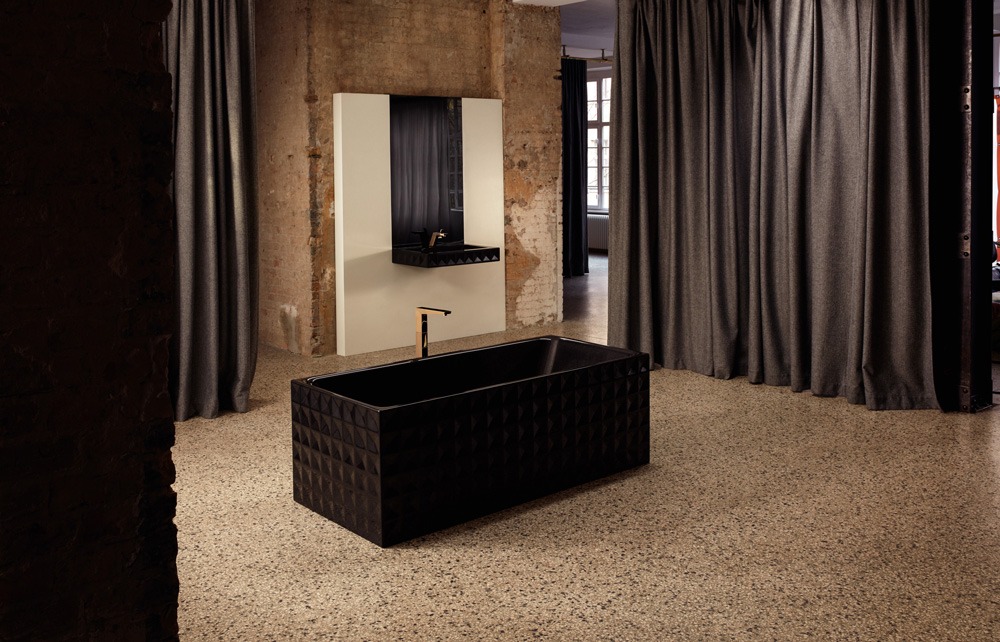Designs made of glazed titanium steel make up the history of the Bette brand – from the first free-standing seamless bathtub to a floor-level shower surface and shower tiles. For two years now, the medium-sized family business has also been vigorously improving its good eco-balance in the production of bath elements. “Green steel” is the decisive element for the production of bath elements in order to rapidly advance the transformation to a completely CO2-neutral production. The goal is to manufacture half of all products in a climate-neutral way by the end of 2024 – with a steadily increasing trend towards CO2-neutral production.
By Heike Edelmann
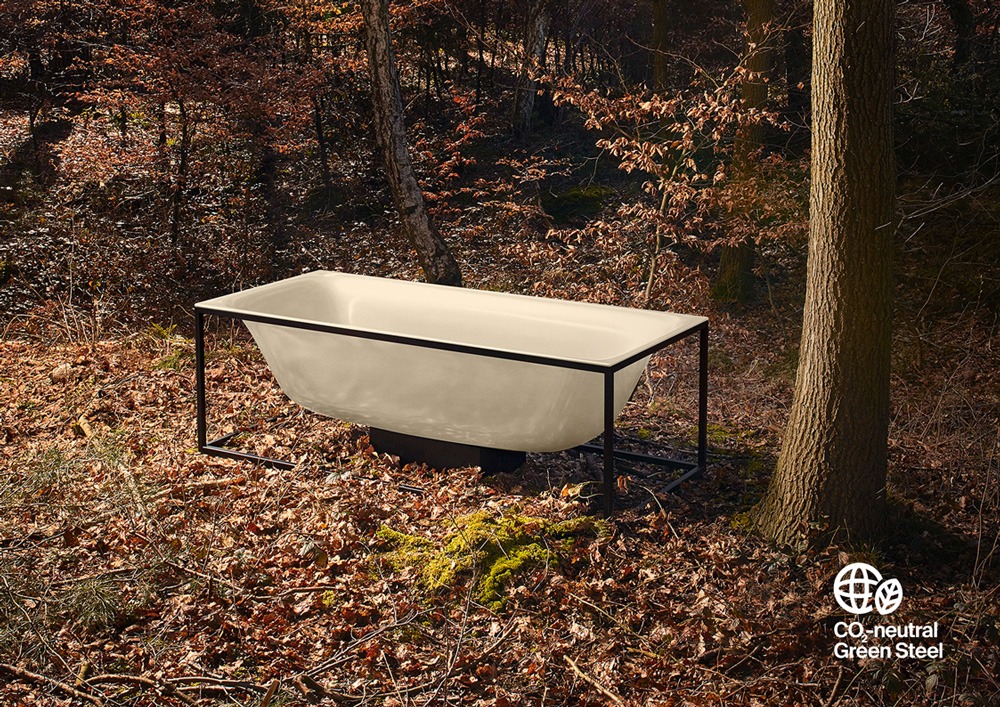
Green steel helps to achieve climate goals
On the way to completely climate-neutral production, “green steel” and its use is of central importance for Bette. In contrast to conventionally produced steel, this is created with the help of hydrogen from renewable energies. However, green hydrogen is not yet available in sufficient quantities and at competitive prices. That is why even environmentally friendly steel producers are planning to use natural gas for a transitional period until about 2050, with a continuously decreasing share in the energy mix. Bette attaches great importance to communicating the transformation towards truly climate-neutral production in a transparent and comprehensible way. On the brand’s website, the number of bath elements that have so far been created entirely from climate-neutral steel is updated daily. At the same time, readers learn that green steel does not yet mean that its production is completely emission-free. Rather, CO2 emissions caused during the manufacturing process are compensated for by the purchase of emission certificates in an equivalent amount.
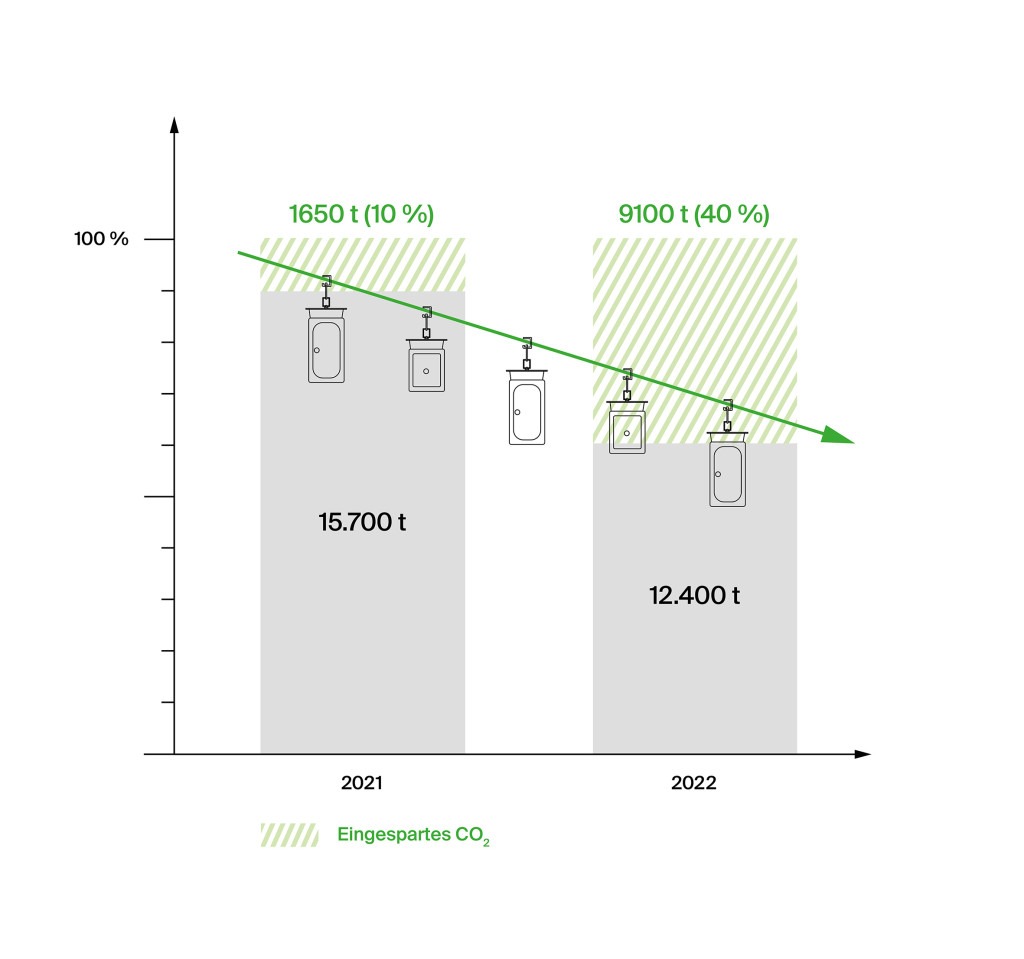
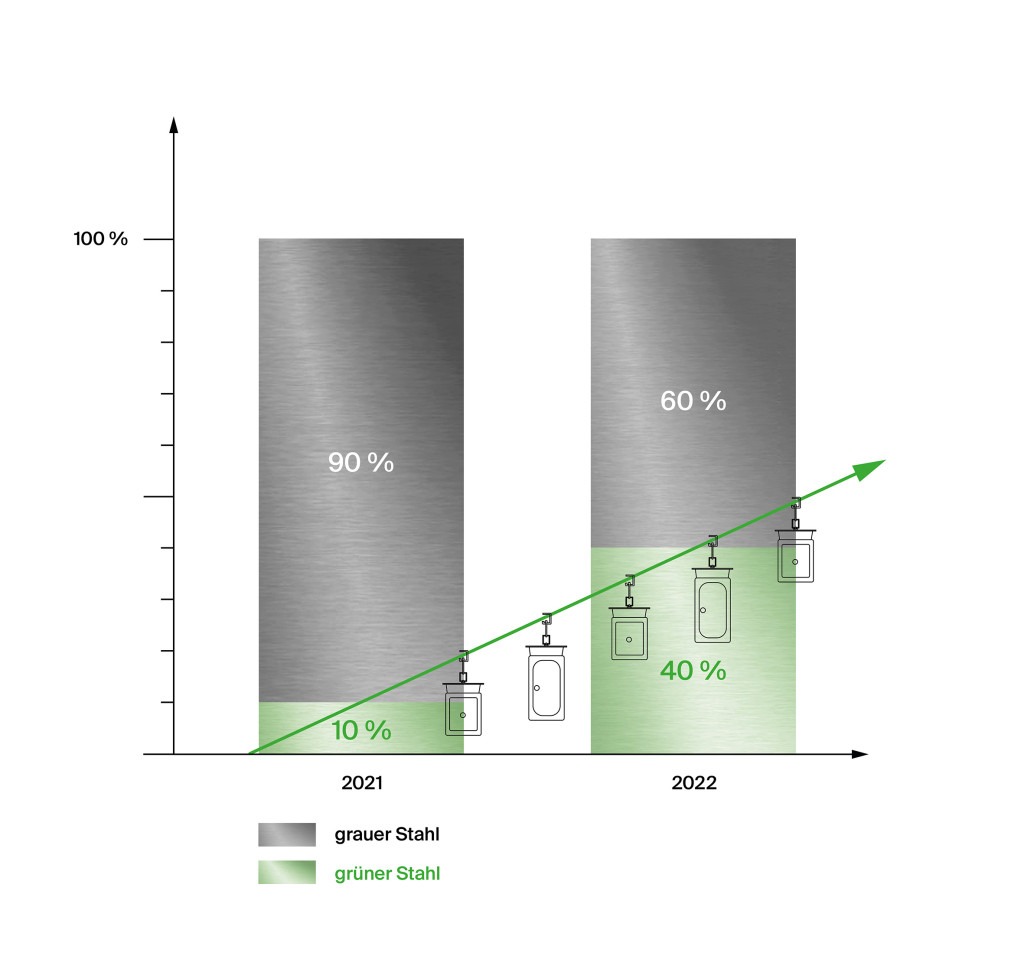
Over a period of two years, Bette has increased the proportion of green steel in its production processes from 10 percent to around 40 percent. In this way, 1650 tonnes of CO2 were saved in 2021, and by 2022 this had already risen to 9100 tonnes. Since the second quarter of 2022, Bette has been using C02-neutral steel for the production of the “BetteLux”, “BetteLoft” and “BetteStarlet” product families as well as for almost all free-standing products, shower surfaces and shower tiles. The family-owned company has set itself the goal of manufacturing half of its products in a climate-neutral way by the end of 2024. The trend is upwards in order to achieve the set climate targets as soon as possible.
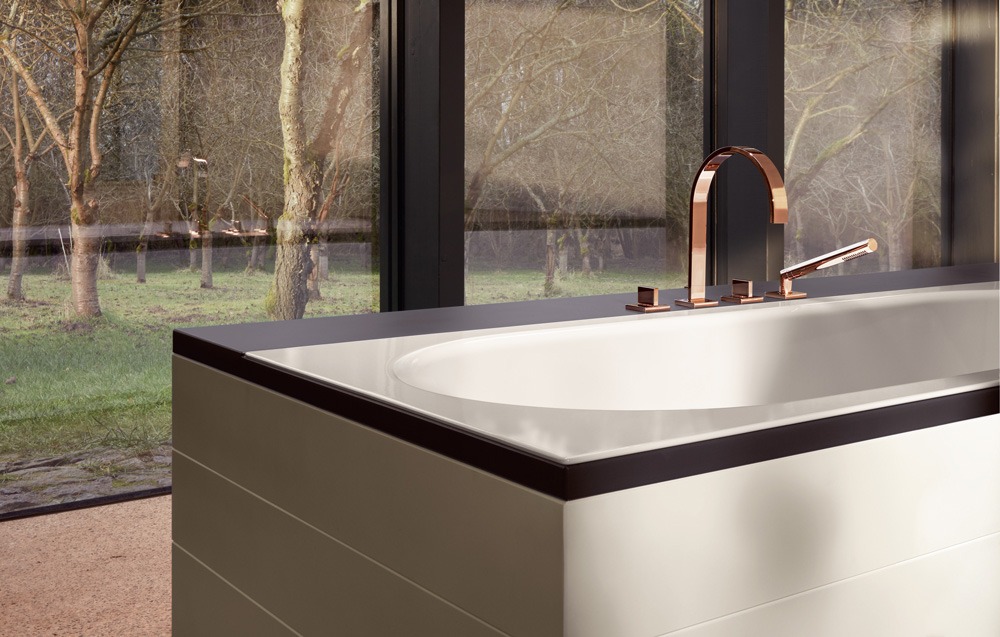
Sustainable production between high-tech and handcraft
In order to work as effectively and resource-efficiently as possible, the Bette team constantly reviews its processes. For example, oils for the special deep-drawing process used to produce the bath elements and enamel, which nebulises when applied to the blanks, are collected and reused. Following the deep-drawing process, experienced employees handcraft the basic shapes into tailor-made unique pieces. Scrap and offcuts produced in the process are also returned to the production cycle. In addition, Bette uses its own combined heat and power plant, energy-saving LED lighting and generates a large part of the electricity it needs itself with the help of photovoltaics. The brand’s sustainability concept also includes efficient logistics. Trucks that deliver Bette products transport food, steel or machine parts for logistics partners in the region on the way back. For Bette, sustainability is “a programme – and not a fashionable buzzword”, says sustainability officer Patrick Sandbothe.
Numerous innovations over the decades
Bette offers a 30-year guarantee for the high quality of its durable and therefore sustainable bathtubs, showers and washbasins. Production still takes place in Delbrück, East Westphalia, without the use of chemicals or solvents. In 1952, Heinrich Bette and his son-in-law Günther Schlichtherle founded the family business to manufacture steel enamel bathtubs. In 1975, the young engineer Fritz-Wilhelm Pahl joined the company as managing partner. He developed a new forming technique for steel, in which the material is drawn smoothly into shape in a special deep-drawing process. This made it possible to shorten the manufacturing processes considerably and to achieve high precision and stability. In the mid-1970s, the bathtubs of the Bette brand were mainly designed in striking colours such as moss green or brown tones. From the end of the 1980s, grey and beige dominated. The still current trend towards bathrooms with white fittings began around the turn of the millennium.
From trade fair innovation to global standard
At the ISH in 2006, the company presented “BetteFloor”, the first floor-level shower surface, which became the global standard in the following years. In 2009, Bette expanded its range to include high-quality washbasins made of glazed titanium steel. One year later, the first free-standing seamless bathtubs followed, characterised by the epithet “Silhouette” and often serving as space-defining solitaires within interior design. In 2011, the mechanical engineer Thilo C. Pahl took over the position as managing partner from his father, and at the same time “BetteOne”, the brand’s first design line, was developed.
For the design lines, which are characterised by pure design and minimalist material thicknesses, Bette cooperates with renowned product designers. These include, for example, Jochen Schmidden or the design studio Tesseraux + Partner. Together with the company, they explore the limits of steel deformation. The aim is to create bathing elements “that merge with the architecture to create an aesthetic work of art”, as can be read on the company website.
Groundbreaking innovations for the bathroom
As an option to bring more colour back into the mostly white-equipped bathrooms, Bette expanded the colour spectrum of its “BetteFlor” floor-level shower in 2016. Likewise, other innovations included the introduction of the “BetteLoft Ornament” bathtubs with three-dimensional geometric patterns on the outer form as well as the “BetteLux Couture”, the first free-standing bathtub with fabric upholstery, which reinterpreted the enduring trend towards a homely bathroom design. With the “BetteCraft”, a round washbasin bowl made of glazed titanium steel, the Bette team took its cue from the sculptural aesthetics of the finest porcelain bowls. Another milestone of the family business is the extremely flat “BetteAir” tile made of glazed titanium steel, which was presented in 2021. It is considered the world’s first shower tile and is laid directly on the screed to save time – as a shower surface that becomes part of the floor surface in various sizes and is even flatter than the proven “BetteFloor” shower surface.
Like almost all free-standing products, shower surfaces and shower tiles, Bette already manufactures “BetteAir” in a completely climate-neutral way by using green steel. One of the most important partners in the transformation processes towards the lowest possible C02 production is the international steel supplier Arcelor-Mittal, based in Luxembourg, which has already been offering green-certified steel since 2020. The emissions generated in the production of this steel are offset by the purchase of certificates. They prove that the steel manufacturer saves CO2 elsewhere. Bette was one of the first customers to purchase green steel from ArcelorMittal.
Bette is an example of how the transformation to climate-neutral production can be successfully advanced within a relatively short period of time by constantly reviewing and improving production processes. The use of green steel within the circular economy is an important building block for this.
More on ndion
More articles on the topic of brands.
Share this page on social media:
